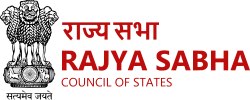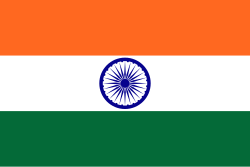This article needs additional citations for verification .(June 2024) |
| Member of Parliament, Rajya Sabha | |
|---|---|
 Logo of The Rajya Sabha | |
 | |
| Ministry of Parliamentary Affairs | |
| Style |
|
| Type | Upper house of the Parliament of India |
| Status | Active |
| Abbreviation | MP |
| Member of | Rajya Sabha |
| Reports to | Chairperson of Rajya Sabha & Deputy Chairperson of Rajya Sabha |
| Seat | Parliament of India |
| Nominator | President of India on the advice of Council of Ministers (in case of nominated MPs) |
| Appointer | Vice President of India |
| Term length | 6 years; renewable |
| Constituting instrument | Fourth Schedule to the Constitution of India |
| Formation | 26 January 1950 |
| First holder | 1952 |
| Salary | ₹124,000 (US$1,500) (incl. allowances) per month [1] |
| Website | sansad |
| This article is part of a series on the |
| Politics of India |
|---|
 |
A Member of Parliament in the Rajya Sabha (abbreviated: MP) is the representative of the Indian states to the upper house of the Parliament of India which is known as "Rajya Sabha" (constitutionally "Council of States"). Rajya Sabha MPs are elected by the electoral college of the elected members of the State Assembly with a system of proportional representation by a single transferable vote. The Parliament of India is bicameral with two houses; Rajya Sabha (Upper house i.e. Council of States) and the Lok Sabha (Lower house i.e. House of the People). Compared to the Lok Sabha, the Rajya Sabha has fewer members and its members have more restricted power. [2] Unlike the Lok Sabha, the Rajya Sabha is a permanent body and cannot be dissolved at any time. However, every second year, one third of the members are retired and the vacancies are filled by fresh elections and Presidential nomination at the beginning of every third year. [3]
Contents
- Responsibilities of the members of parliament
- Special powers
- Term
- Qualifications for being a member of parliament
- Disqualifications for being a member of parliament
- Composition/strength
- Members of the Rajya Sabha
- See also
- References
- Further reading
All Members of Rajya Sabha rank 21st in the Order of Precedence of India. [4]